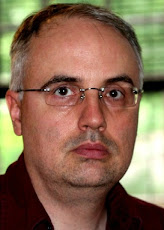For a while, Uncommon Descent's resident flack (Denyse O'Leary) has linked in several blog entries from TheBestSchools.org's blog. TBS appears to be a web resource targeted at Christians choosing a college. The main site mixes articles on the 10 Best Nursing Programs with interviews with folks such as William Lane Craig. The blog, however, seems to be the sole province of James Barham.
Well, it used to be the sole province of James Barham. Now Denyse herself has begun posting there, and Barham's posts have begun cross-posting between TBS and the Discovery Institute's Evolution News and Views site.
I had hopes for TBS, since it seemed to allow comments and Barham seemed to be a nice fellow posting on intellectually interesting topics. Alas, after I registered and tried to post a comment it went from moderation to deletion without seeing the light of day. At this point, I would consider TBS (the blog at least) to be just another corner of the DI link farm.
